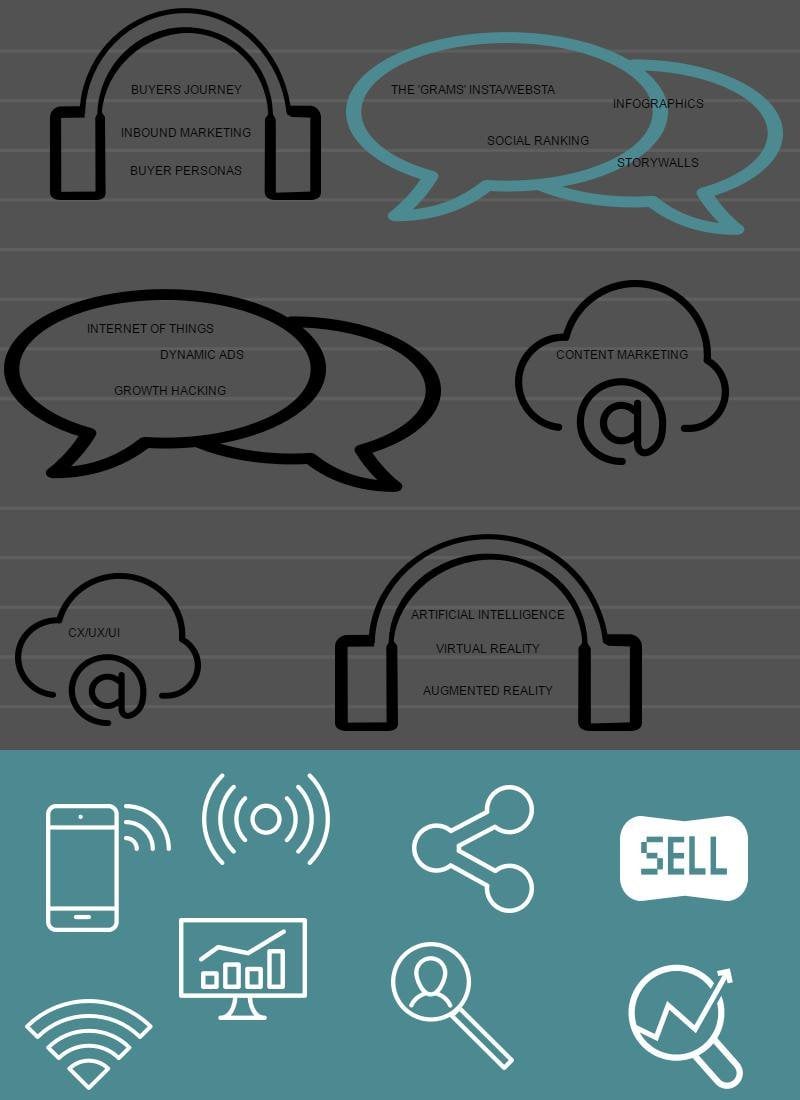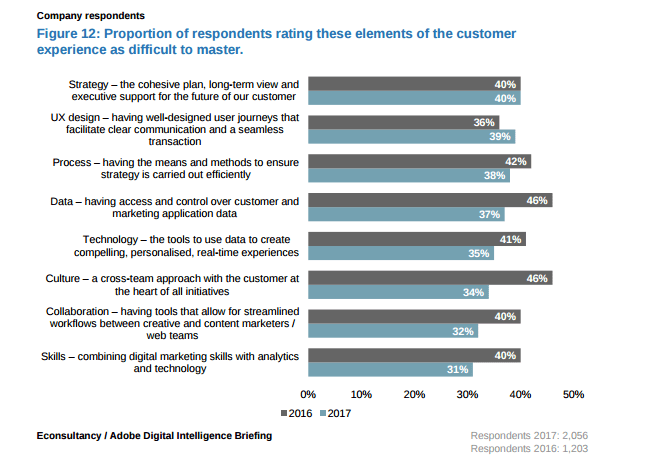22 October 2019
Everybody is talking about it but do people really know what Digital Marketing is? I began this blog post by asking the God of all things digital, Google…and this is what it told me…”Digital marketing is an umbrella term for the marketing of products or services using digital technologies, mainly on the Internet, but also including mobile phones, display advertising, and any other digital medium”.
But is it just that?
Let’s face it digital channels are not actually that new, the internet, email marketing, websites, banner and advertising, social etc. have all been around now for a long time but now something else has evolved.
A new phraseology has surfaced, a whole new syntax, geared to fear. Terms such as “Growth Hacking” have arrived, sounds quite cool but also quite scary, right? And what the heck is it?
The Wikipedia answer is “Growth hacking is a process of rapid experimentation across marketing channels and product development to identify the most effective, efficient ways to grow a business. Growth hackers are marketers, engineers and product managers that specifically focus on building and engaging the user base of a business”.
Still none the wiser?
This particular phrase goes further to increase my view that the terminology that is developing around digital marketing today is actually just a rehash, refreshed view of marketing but applied to the evolution that the 21st century of technology brings us. Its clever channel marketing albeit a little hasty and uses shortcuts where the tactics for growth hacking are concerned. In short, growth hacking methodologies are generally used by start-up companies looking to get a quick launch into their marketplace – short-cutting SEO and organic growth a bit by adding piggybacking and ultra-linking tactics to campaigns. Ultimately you will still need to create the backbone marketing eventually or in tandem if you’re smart about it.
I spent about an hour web surfing around this term and there is lots to read but the essence is this, there is no definitive shortcut to gaining speed growth in customers, let’s face it if there was a quick guide to this methodology we’d all be crashing servers around the world to access it. That’s not to say that this is a space that should not be observed, as tactics are fast developing, but as quick as hackers grow, so does technology and the God Google to becomes wise to it.
However as far as digital marketing is concerned, growth hacking is not a term to be ignored and you can read more read more on growth hacking strategies and if you want a sanitised version, one of my favourite blogs Kissmetrics sums it up nicely with their simple guide to growth hacking.
Digital Phraseology Guide

And let’s not forget BIG DATA…
So the phraseology is a bit scary, but what next?
Managing customer expectation and the user experience. At the heart of every effective digital marketing strategy is the customer, defined better in digital terms as the user, after-all anyone using technological channels for engagement is inviting a customer on a user experience journey. Is this so different to what has become known as ‘traditional marketing methodologies’?
Yes and no.
Yes, because the pace of digital channels requires a higher level of integration and engagement in your marketing. For example, a really clever stop you in your tracks Direct Mail postcard can be very effective, but it doesn’t require any definitive on the spot action; there is no click here or read more, it is a compelling message that will stay with the customer and provoke thought and action over a period of time. Digital is in the real time so your message is on the live stage and it is this that heightens the customer expectation.
No, because every marketing campaign whatever the medium is inviting the customer on a journey of aspirations, tapping into the human psyche of want and need.
What do we mean by journey in digital terms?
UX/CX/UI – User Experience, Customer Experience and User Interface are all absolute essentials in your digital marketing toolkit. They are the foundation layers that make the channel marketing activities work. If you don’t pay attention to developing the best UX and CX possible for your market you may as well stick a banner on your site saying “Don’t stop here Mr Customer” or return to the days of old basic untargeted marketing to the masses and engaging no-one.
User Experience (UX) is the process of users interacting with your product and the experience they receive from that interaction. UX is measured with metrics: success rate, error rate, abandonment rate, time to complete task, and clicks to completion.
Customer Experience (CX), by contrast encompasses all the interactions a person has with your brand digitally and otherwise. It has several points of measure: overall experience, likelihood to return or repeat use, and likelihood to recommend to others. In essence, UX is part of a broader CX, but CX contains some aspects outside of a product that UX does not. But the two synergise.
I can’t say I remember a specific point in time that this digital channel transition happened, I think it has naturally evolved over time but it was inevitable. It is efficient and effective if executed well. How often do you open an email or Google something, click an ad and expect an immediate response or answer? I would say on average 5-6 times a day if not more. The days of sending out flat emails with a load of advertising spiel are long gone. Email campaigns are now the epitome of consumer engagement, it has to be smart, subliminal and all engaging.
Mobile technology has made us all dependent on immediate response mechanisms. It is the single biggest channel that has massively raised the bar for marketing.
Figure 1 taken from Digital trends 2017 illustrates the importance of each digital element to your strategy

What about Big Data and Marketing Automation?
Marketing Automation is a must for the digital marketeer’s toolkit not least because once you have set it up it does so much of the hard work for you. Take a look at G2 crowd – marketing automation at its best or check out highly rated providers such as Spotler.
As for Big Data…
Wikipedia says
“Big Data is a term for data sets that are so large or complex that traditional data processing application software’s are inadequate to deal with them. Challenges include capture, storage, analysis, data curation, search, sharing, transfer, visualisation, querying, updating and information privacy. The term “big data” often refers simply to the use of predictive analytics, user behaviour analytics, or certain other advanced data analytics methods that extract value from data, and seldom to a particular size of data set.”
Google says
“Extremely large data sets that may be analysed computationally to reveal patterns, trends, and associations, especially relating to human behaviour and interactions.”
IBM says
“Big data is being generated by everything around us at all times. Every digital process and social media exchange produces it. Systems, sensors and mobile devices transmit it.Big data is arriving from multiple sources at an alarming velocity, volume and variety. To extract meaningful value from big data, you need optimal processing power, analytics capabilities and skills”.

Big Data or simply data is unequivocally the single most important thing happening in today’s society and it underpins all marketing strategists thinking. It is the measure of what we all do. Human consumption, human habits, human patterns and the measure of them all it’s what analytics are made of. And it is these analytics that shape our digital marketing strategy, understanding and analysing our customer patterns of behaviour and search.
It is this that the savvy marketer and business will react to, after-all it is the customer defining the marketing journey it wishes to embark upon. And therein lays the heart of digital marketing. It can be measured it can be viewed it can be actioned. An insightful read into the history of Big Data.
There is a plethora of information and useful guides to digital marketing methodologies and trends out there but for a good in-depth guide read the 2019 Digital Trends by Adobe.
Author: Rebecca Herle
Disclaimer: Please note that this blog only contains general information and insights about legal matters. The information is not advice, and should not be treated as such. Kompass.com









Comentarios
No Comments